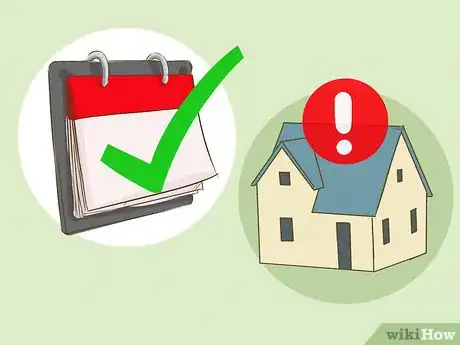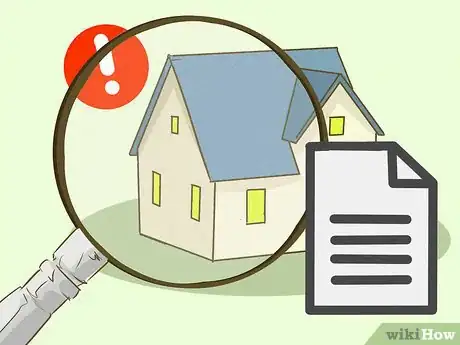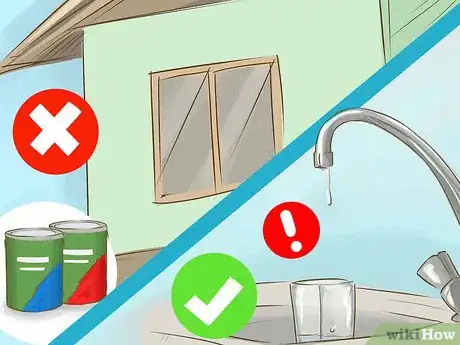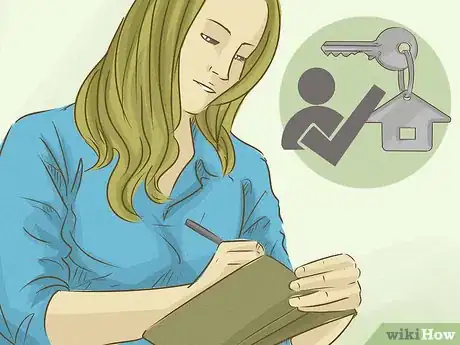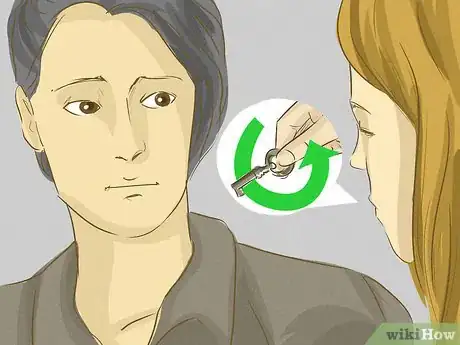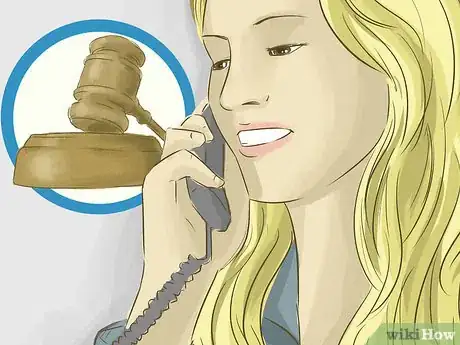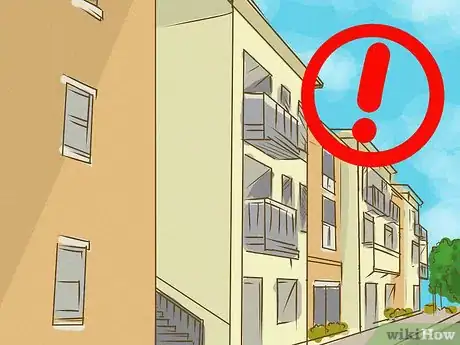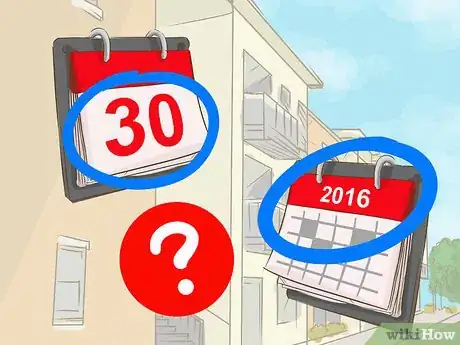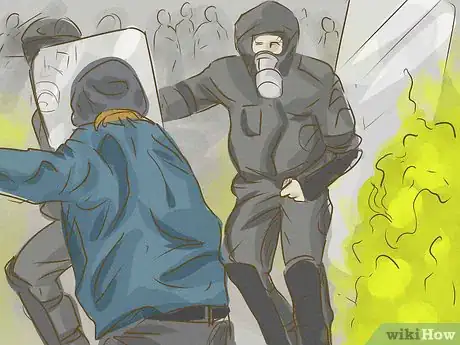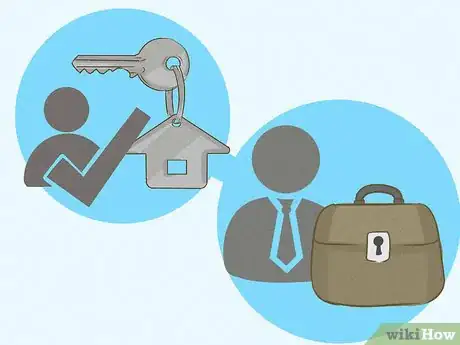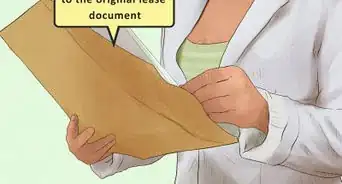This article was co-authored by Srabone Monir, JD. Srabone Monir, Esq., is an Attorney based in New York. She received her JD from the St. John's University School of Law in 2013, and has used her legal training in positions for 32BJ SEIU, the New York Legal Assistance Group, and Disability Rights New York. She is currently a Principal Law Clerk with the New York State Supreme Court. She is also a VA Accredited Attorney as of 2015 and is licensed to practice law in New Jersey and in New York.
There are 32 references cited in this article, which can be found at the bottom of the page.
wikiHow marks an article as reader-approved once it receives enough positive feedback. In this case, 89% of readers who voted found the article helpful, earning it our reader-approved status.
This article has been viewed 769,534 times.
At some point, most people who rent residences have to find a way to get out of a lease. Perhaps you have a new job opportunity in another location. Or perhaps your landlord is a nightmare and your residence isn’t what it initially appeared to be. In many cases, you will need to pay a penalty to get out of a lease, but in others you might be able to avoid this penalty. Some ways of getting out of a lease are legal, and some are not. Familiarize yourself with all of your options before taking any action, and never break the law.[1]
Steps
Claiming a Residence as Uninhabitable
-
1Research your local landlord-tenant laws. You cannot be forced to stay in a housing situation that is dangerous or significantly different from what you were guaranteed in your lease. In the United States, each state has laws that outline an implied warranty of habitability. This is implied in any residential lease (not applicable for commercial leases) and requires landlords to provide a minimum standard of safe, sanitary, and livable condition.[2]
- The basic conditions required by law are generally similar. Usually, the residence must have a safe electrical system, drinkable water, locks, operational sewer system, a system to deal with removal of trash, and a smoke detector. The residence should not have an infestation of pests such as bugs or rodents.
- Specific regulations may vary by state. Check out Nolo’s database of state landlord-tenant laws for information in your state.[3] A brief version of state habitability statutes is available via Landlord.com.[4]
-
2Inspect your residence and its surroundings. To determine whether your landlord is violating the warranty of habitability, inspect your residence and the surrounding area. In an apartment building, the landlord is responsible for shared public areas as well as individual residences. Look for conditions that are dangerous to life, health, or safety such as broken stairs or railings, poor lighting, or evidence of criminal activity. These may breach the warranty of habitability.
- You cannot have been responsible for causing these issues. For example, if your window is broken because you threw a baseball through it and you haven’t paid to have it fixed, that situation does not violate the warranty of habitability.
- Are there broken windows or doors? Are there exposed, sharp edges on woodwork or glass?
- Does it contain an unabated lead hazard or other toxic materials?
- Are vital facilities -- e.g., toilets, heat, electricity, water, refrigerator -- operational?[5]
- Do pests keep returning, no matter how clean you keep your residence?
- Are there noxious odors in the air from sewage leaks?
- You can also look for issues outside of your residence. Is the parking lot/area being neglected? If there are gates, are they maintained? Is the building substantially different from what you were shown before you signed a lease?
Advertisement -
3Give your landlord opportunities to fix these issues. You must give your landlord a fair chance to remedy the problems. You cannot simply abandon your residence and cite these issues later. If your landlord does not fix the issues within a reasonable time, you have just cause to terminate your lease.[6] [7]
- To prove that your landlord did not respond to the habitability issues in a reasonable time, you must be prepared to show that the landlord had knowledge of the defect or necessary repairs and failed to act.
-
4Give written notice of the defects to your landlord when you discover them. Send a copy by certified mail and request a return receipt so that you can prove your landlord received your complaint. Keep a copy of all communication for your records. Take photographs of the defects when possible. These records may help you prove landlord neglect later.[8]
- Landlords may also be subject to “constructive notice” of the need for repair. This means that the landlord should or could have known about an obvious problem through regular maintenance or visits to the property.
-
5Set a reasonable deadline to fix the issues. What constitutes a “reasonable time” varies by situation and by state. For example, if you notify a landlord in the summer that the furnace does not work, it is not reasonable to give him or her 24 hours to comply because not having the furnace does not present a serious threat to habitability at that point. However, if you make the same complaint in the middle of winter, you would be justified in expecting an immediate repair.[9]
- State a specific deadline in your notice, and make it clear that if the landlord does not complete the repairs to your satisfaction by the date given, you will abandon your lease.
- Make sure that the date you give your landlord gives him or her enough time to actually fix the condition. For example, you should not send your letter on a Monday stating that all repairs must be made by Tuesday. Many states require you to allow at least 1-2 weeks for repairs to be made.[10]
- Understand that if you abandon your lease too quickly you can be taken to court. Do not abandon your lease until you have given your landlord the chance to fix issues.
-
6Have your home inspected. If your landlord refuses or delays making necessary repairs, consider having your city’s housing inspector inspect your residence. The inspector can give an objective account of issues with the property and may be more effective at convincing your landlord to act.[11]
-
7Remember that the warranty of habitability applies to serious problems only. A serious problem is one that creates severe discomfort or danger to the resident.[12]
- For example, not having heat in the winter or running water are examples of serious problems. A paint color you’re not happy with is not a serious problem.
- If your residence is significantly different than what you were promised when you signed your lease, you may be able to claim a violation of the habitability warrant. For example, if you were shown an apartment with a working stove and refrigerator and your apartment had neither when you moved in, that is a significant breach that impacts your ability to live in the residence.
- Slight variations do not qualify for this warranty. For example, if you were shown a unit with beige walls and were rented a unit with brown walls, this is a nuisance, but not a dangerous condition.
Working with Your Landlord
-
1Assign your lease. Assigning is very similar to subleasing, but subleasing is only temporary and usually for a short period of time. With subleases, the original tenant is intended to return to the residence.[13] When you assign your lease, you permanently sign over your residence to another tenant. Landlords may prefer a lease assignment over a sublet.[14]
- Advertise your listing and come up with a handful of names for your landlord. This way, your landlord can choose the best candidate to live on his or her property.
- Both you and the assignee are responsible for the terms and conditions of the lease. You can request your landlord to release you from these responsibilities in writing. Make sure that you, the new tenant, and your landlord all sign a document stating that the new tenant is now responsible for paying rent, and that you are released from any obligation under the lease.
- If you do not sign an agreement with the new tenant, they could leave the residence and you would still be obligated to pay the rent that was left unpaid, as well as cover any damages.
- If your landlord knowingly accepts rent from the assignee, s/he is generally required to honor a lease assignment even if s/he did not give permission for it.
- If your landlord will not allow a new tenant to completely wipe out your obligation to pay if the new tenant does not pay, make sure that you sign a separate agreement with the new tenant. Although you would still be responsible to your landlord for any unpaid rent, you could sue the new tenant for the unpaid rent.
-
2Work with your landlord on an agreement. You may be surprised that your landlord is willing to work with you and help you. Before burning bridges, it's best to try an honest, straightforward conversation. Especially if you live in an area with a lot of demand for rentals, your landlord may be willing to just let you off the hook. It never hurts to ask!
- Explain your situation. For example, if you have gotten a new job or your family is growing, your landlord may be sympathetic to your new situation and agree to let you out of the lease.
- Offer to pay the next one or two months' rent to help their cash flow. This allows him or her more time to find a renter, or to renovate the residence so they can increase their earnings.
- Additionally, for a fee (usually one month’s rent) many landlords will help you find someone to assign your lease for the rest of the lease term.
- If you don’t know your landlord, that’s not a good sign. If requests for information are met with refusal or silence, consider ending your lease based on their lack of responsiveness and clarity.
- Get any agreement in writing, preferably notarized. Oral agreements are very hard to prove in court, should anything go wrong.[15]
-
3Help your landlord find a new tenant. Most landlords hesitate to let someone out of a lease because they feel they will lose money while searching for a new tenant. You can lessen their hesitation by helping find a tenant to replace you when you move out.
-
4Remind your landlord that they have a duty to re-rent. In most states, landlords have an obligation to “mitigate damages” when a lease is broken. This includes a responsibility for them to re-rent a residence if you leave a lease early.[16]
- For example, if you want to get out of a lease that has five months left on it, your landlord cannot simply let the property sit empty for those five months and then sue you for back rent. S/he must take reasonable steps to re-rent the residence.[17]
- If your landlord has to rent the residence for a lower price than your rent, you will likely be responsible for paying the difference. If it takes a few weeks for the landlord to find a new tenant, you will likely be required to pay prorated rent for those weeks.[18]
- If you can find another tenant to rent the residence, your landlord may be happy to let you leave.
-
5Look for a buyout clause. A buyout clause is a section of your lease that allows you to legally end your lease (usually for a certain amount of money and with adequate notification). Carefully read your lease to see what options you have.[19]
- If you cannot find your lease, your landlord is required to give you a copy upon request.
- Other wording for this type of clause includes “early termination” or “early release.”[20]
- Use caution when taking this route.–It may end up costing you a lot of money in the end.
-
6Contact an attorney. If your landlord will not work with you reasonably, try finding an attorney who will review the contract for you before you agree to a buyout clause. S/he may be able to find legal issues with the contract or with the residence that will allow legal contract termination.
- Also keep in mind that landlords who wish to avoid a court case may negotiate with an attorney more seriously than with their tenant.
Terminating a Lease with a Loophole
-
1Check your lease for ambiguities or discrepancies. If anything in your lease contract is unclear, you may be able to use that to your advantage. Read and reread your lease for any instances of poor clarity. Also look for terms in the contract that may not be legally enforceable.[21]
- For example, if your lease agreement says that your security deposit is non-refundable unless you continue the lease for a certain number of months, this is illegal. Security deposits must be returnable.[22]
-
2Determine whether your landlord is fulfilling all terms of the lease. Violations of habitability and safety can allow you to break a lease. However, there are also other common terms in a lease that may allow you to find a way out if the landlord isn’t fulfilling them.[23]
- For example, many leases have “quiet enjoyment” or similar clause. This requires the landlord to ensure that no tenants are disruptive. If you’re constantly bothered by your neighbor’s loud parties and you have notified your landlord and your landlord has not taken action to remedy the situation, you may have grounds to break your lease.[24]
- Another common term that might be violated pertains to service animals. Under the Americans with Disabilities Act, a landlord cannot enforce a “no pets” policy on tenants who require a service or therapy animal. If your landlord has tried to force you to get rid of a necessary service animal, you may have grounds to terminate the lease.[25]
-
3Find other loopholes. Many landlords rely on boilerplate lease forms. However, because lease laws vary by state, your lease could be invalid when your landlord has used a form with language that isn't legal in your state.[26]
- It can be difficult to find these loopholes if you're not an attorney. Consider hiring a tenancy attorney or having a tenancy advocate review your lease. Even if the consultation costs a few hundred dollars, it could be worth it if you find a way to legally get out of your lease.
Using Other Legal Justifications
-
1Determine if your residence is an illegal unit. Sometimes, landlords rent out residences that are not legally recognized by the local municipality.[27] Illegal residences are more common than you might think. Research state and city regulations in your area. You can generally contact government agencies such as Building and Safety or Housing agencies, to help you determine whether your residence is illegal.
- For example, some portions of a town or city are only zoned for single family residences. If you are living in a house that has been converted into a multi-unit apartment, the lease may be invalid.[28]
- If you are renting a residence in an area that is only zoned for commercial use, your lease may be invalid.[29]
- In some cases, landlords will rent illegal residences without the proper permits. For example, if your landlord is renting out a garage or guest house without a permit, this rental may be illegal.
-
2Determine whether your lease is actually a monthly rental agreement. A lease sets fixed terms and conditions for a set period of time. A rental agreement usually does not set an endpoint and is a month-to-month agreement.[30] If your landlord represented a monthly rental agreement as a lease, you may be able to terminate the agreement.
- If your agreement stipulates that you will rent the residence for a set period of time, such as one year or 24 months, you probably have a lease. Leases usually cannot be violated or abandoned without penalty.[31] [32]
- A monthly rental agreement can generally be changed with written notice. This means that, monthly tenancy agreements can usually be ended on short notice. In most states, all you must do is provide the landlord a 30 day notice of your intent to leave.[33] Check your state for its regulations.[34]
-
3Research your landlord. If your landlord or property manager is not who they claim to be, you may have an automatic way out of your lease.
- For example, your landlord could be a master tenant who is subleasing you their residence without notifying the owner or property manager. Leases are usually invalid in this case.[35]
- In some cases, the name on the management agreement and lease may not match. If this is the case, you may be able to claim that you do not have a legal relationship with one of the entities.
- In some cases, the company that is managing your property may not legally exist.
-
4Use circumstances beyond your control to your benefit. Some situations that arise may give you a legal basis to terminate your lease. Some of these, such as being called to military duty, are regulated by federal law. Most are up to individual states to determine. The following are a few reasons why you might be able to terminate your lease without a penalty:
- Getting called to active military duty.The Service members Civil Relief Act (SCRA) allows military service members who are called for active duty for more than 90 days may terminate a lease. Military service members entering active duty for the first time are also eligible to terminate a lease early.
- You must deliver written notice of your termination and a copy of your military orders to your landlord.
- The termination date for a lease that requires monthly rent is 30 days after the next time rent is due. For example, if the next rental due date is December 1, the effective termination date is February 1.
- Domestic violence within the place of residence. In many states, a survivor of domestic violence may terminate a lease with 30 days notice.[36]
- You may be required to provide proof of this violence, such as a police report or court protective order.
- Serious injury and hospitalization. In some states, serious illness, injury, hospitalization, or the necessity of moving to an assisted-living facility will provide grounds to get out of a lease.[37]
- Declaring bankruptcy.
- Getting called to active military duty.The Service members Civil Relief Act (SCRA) allows military service members who are called for active duty for more than 90 days may terminate a lease. Military service members entering active duty for the first time are also eligible to terminate a lease early.
-
5Investigate a Force Majeure clause. Many leases have a Force Majeure clause, which translates loosely to “act of God.” These clauses allow for the tenant and/or landlord to suspend or terminate a lease if certain circumstances beyond their control occur.[38]
- For example, natural disasters, terrorism, and civil unrest may all be possible reasons to invoke a Force Majeure clause.
-
6Take advantage of civil codes. Outside of the basic laws pertaining to habitability, most states have extensive civil codes that explain the kinds of basic accommodations that landlords should be prepared to provide. They also govern what landlords may and may not do.[39]
- For example, a civil code may tie a lease to a job on the premises, such as groundskeeper or manager. If you quit the job, you may not be required to maintain the lease.[40]
- Civil codes require the enforcement of the sections of lease agreements that deal with general repairs. If your lease requires the landlord to provide and maintain a refrigerator, for example, you can vacate the apartment if they fail to do so.[41]
- As long as the apartment is habitable, you cannot vacate your lease without first taking your landlord to court. Additionally, you must continue paying rent until you have a court order stating that you can terminate your lease.
- If your landlord makes weak or no effort to respond to your demands, you can take him or her to court for breach of contract. However, make sure that any demands you make of your landlord have a basis in your lease agreement. You cannot make frivolous demands.
Sample Letters
Warnings
- Each state in the US is different. Know the laws in your state before you jump to any conclusions.⧼thumbs_response⧽
- Do not stop paying your rent even if your landlord is in the wrong. Withholding rent is illegal in most circumstances, and navigating when those circumstances apply usually requires a property lawyer.⧼thumbs_response⧽
- Do not exacerbate the problem with delinquent behavior. Becoming a “bad” tenant in the hopes that your landlord will kick you out will only make your problems worse. You could also be responsible for the damages.⧼thumbs_response⧽
- Keep all of your actions legal. Do not do anything that seems even legally questionable. Your landlord may have a basis to sue you if you do not remain above board.⧼thumbs_response⧽
References
- ↑ https://www.rocketlawyer.com/article/breaking-a-lease.rl
- ↑ http://definitions.uslegal.com/w/warranty-of-habitability
- ↑ http://www.nolo.com/legal-encyclopedia/state-landlord-tenant-laws
- ↑ http://www.landlord.com/state-habitability-statutes-by-state.htm
- ↑ http://www.state.nj.us/dca/divisions/codes/publications/pdf_lti/habitablity.pdf
- ↑ http://www.palawhelp.org/resource/warranty-of-habitability?ref=ywh33
- ↑ http://www.state.nj.us/dca/divisions/codes/publications/pdf_lti/habitablity.pdf
- ↑ http://www.state.nj.us/dca/divisions/codes/publications/pdf_lti/habitablity.pdf
- ↑ http://www.palawhelp.org/resource/warranty-of-habitability?ref=ywh33
- ↑ http://www.landlord.com/state-habitability-statutes-by-state.htm
- ↑ http://www.palawhelp.org/resource/warranty-of-habitability?ref=ywh33
- ↑ http://www.palawhelp.org/resource/warranty-of-habitability?ref=ywh33
- ↑ http://www.nytimes.com/2012/03/11/realestate/breaking-a-lease-is-hard-to-do.html?_r=0
- ↑ http://www.masslegalhelp.org/housing/private-housing/ch12/assigning-your-lease
- ↑ http://metcouncilonhousing.org/help_and_answers/if_you_want_to_break_your_lease
- ↑ http://www.nolo.com/legal-encyclopedia/free-books/renters-rights-book/chapter9-5.html
- ↑ http://www.legalmatch.com/law-library/article/duty-to-mitigate-damages.html
- ↑ http://realestate.aol.com/blog/2013/08/19/break-apartment-lease-legally/
- ↑ http://www.reluctantlandlord.net/break-lease-buy-out-clause/
- ↑ http://blogs.findlaw.com/law_and_life/2013/09/legal-how-to-breaking-a-lease-without-penalty.html
- ↑ http://blogs.findlaw.com/law_and_life/2013/09/legal-how-to-breaking-a-lease-without-penalty.html
- ↑ http://www.nolo.com/legal-encyclopedia/free-books/renters-rights-book/chapter4-2.html
- ↑ http://blogs.findlaw.com/law_and_life/2012/05/3-ways-a-tenant-can-break-a-lease.html
- ↑ http://www.lease-advice.org/information/faqs/faq.asp?item=200
- ↑ http://realestate.findlaw.com/landlord-tenant-law/your-rights-as-a-tenant.html
- ↑ http://homeguides.sfgate.com/can-out-apartment-lease-penalty-1753.html
- ↑ http://www.legalmatch.com/law-library/article/tenants-rights-to-illegal-units.html
- ↑ http://www.caltenantlaw.com/Habitability.htm
- ↑ http://www.legalmatch.com/law-library/article/tenants-rights-to-illegal-units.html
- ↑ http://www.forbes.com/sites/trulia/2014/11/14/the-difference-between-a-lease-and-a-rental-agreement/
- ↑ http://www.nolo.com/legal-encyclopedia/free-books/renters-rights-book/chapter2-2.html
- ↑ http://www.lawdepot.com/rental-agreement/faq/
- ↑ http://www.caltenantlaw.com/Habitability.htm
- ↑ http://www.nolo.com/legal-encyclopedia/ending-month-month-lease
- ↑ http://metcouncilonhousing.org/help_and_answers/subletting
- ↑ http://www.nolo.com/legal-encyclopedia/free-books/renters-rights-book/chapter9-6.html
- ↑ https://www.rocketlawyer.com/article/breaking-a-lease.rl
- ↑ http://commercialobserver.com/2014/05/f-is-for-force-majeure/
- ↑ http://www.caltenantlaw.com/breaklease.htm
- ↑ http://www.caltenantlaw.com/breaklease.htm
- ↑ http://codes.ohio.gov/orc/5321
- http://homeguides.sfgate.com/legal-reasons-break-apartment-lease-1750.html
About This Article
To get out of a lease, research local landlord-tenant laws and inspect your residence to determine if your landlord is violating the warranty of habitability. Note any issues, give written notice of the defects to your landlord, and give them an opportunity to fix the issues. If your landlord doesn't fix the issues within a reasonable time, you have just cause to terminate the lease. If your residence is habitable and the landlord won't let you out of the lease, you'll have to take your landlord to court. For tips on looking for a loophole in your lease, read on!




